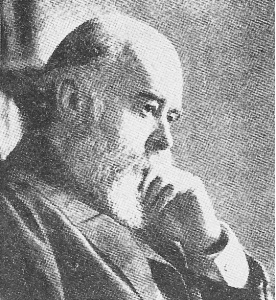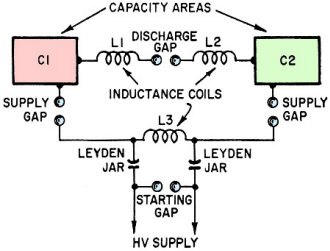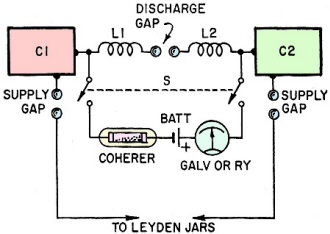Inventors of Radio: Sir Oliver Joseph Lodge
|
|
The veracity of claim of ownership to many (maybe most) of the world's significant inventions is challenged either by others who seek credit, or by historians desiring to "set the record straight." In this 1963 Radio−Electronics "Inventors of Radio: Sir Oliver Joseph Lodge" article, author Dexter Bartlett says that Sir Lodge was the first to build a coherer, not Édouard Branly. Interestingly, Mr. Bartlett credits David Edward Hughes for the cohere prior to Branly as well. Maybe the Bartletts and the Branlys had a long-standing family feud going on, and he would sooner give credit to King George than to Branly ... but I digress. Sir Lodge had many notable accomplishments, including a tuned wireless telegraphy patent he sold to Marconi, portable antennas, and a triode detector circuit. See patent US609154A "Electric Telegraphy," granted May 21, 1901. Inventors of Radio: Sir Oliver Joseph Lodge
Lodge has been called "The Patron saint of radiotelegraphy." Through him, early experimenters got their first understanding of electrical resonance. He - not Branly - first used and named the coherer, and he sent wireless signals several hundred feet while demonstrating Hertz' discoveries. Oliver Joseph Lodge was born at Penkull, England, June 12, 1851. He graduated D.Sc. from London University in 1877. In 1881 he took the chair of physics at University College in Liverpool, where he remained until, in 1900, he was chosen first principal of the new Birmingham University. He was knighted in 1902. As far back as 1880, he was able to say, " ... the transmission of such things as views and pictures by means of the electric wire ... has not yet been done but seems already theoretically possible and may very soon be practically accomplished." The phenomenon called cohesion - the sticking-together of small (metallic) particles in an electric field - dates back to 1850. It had been used sporadically from then on, but Lodge and a colleague used it in 1884 for a remarkably far-sighted purpose: clearing rooms of smoke and fumes! Fig. 1 - A transmitter Lodge used around 1900. High voltage (from spark coil or Wimshurst machine) charges Leyden jars. According to Lodge, the spark across discharge gap is the most important in producing oscillating waves; however, discharge gap can be shorted and sparks across supply gaps used alone. In modern terms, C1-L1-L2-C2 form dipole antenna system with distinct resonant ("syntonous") frequency. Fig. 2 - one of Lodge's transmit-receive circuits. C1-L1-L2-C2 are same as in Fig. 1, and receiving circuit uses series-resonant voltage buildup across coils. S is a high-voltage cutout used to disconnect receiver during transmission. Branly was also working with the coherer, and in 1891 published among his findings the fact that metal filings in a glass tube would cohere for quite some time after the passage of an electric discharge, and remain conductive, but that they would separate and become non-conducting if the tube were tapped. It seems clear from his report that he did not realize that the phenomenon was caused by Hertzian (electromagnetic) waves. It was Lodge who grasped that fact and first put it to work. Around 1897 Lodge turned his attention to wireless telegraphy. With a collaborator he took out the first patent on tuned wireless telegraphy, which was later sold to Marconi. It greatly increased the range of wireless communication, and for the first time allowed more than one station on the air simultaneously. A brief list of some of his other work is almost breathtaking: The seat of emf in a voltaic cell and the speed of ion movement; electrolysis; investigation of lightning (he proposed that it might be oscillatory in nature). Inventions include the disc coherer, automatic signaling machine, reed telegraph relay, portable antennas for military use, a triode detector circuit, and a method of cascading two triode amplifier stages. He died at Amesbury, Wiltshire, England, on Aug. 22, 1940.
Posted June 14, 2023 |
|

 By Dexter S. Bartlett
By Dexter S. Bartlett 
